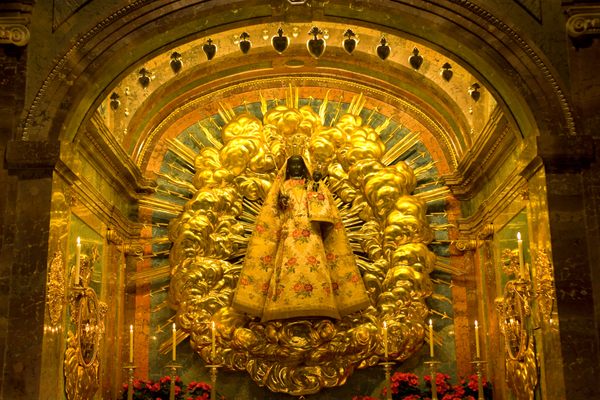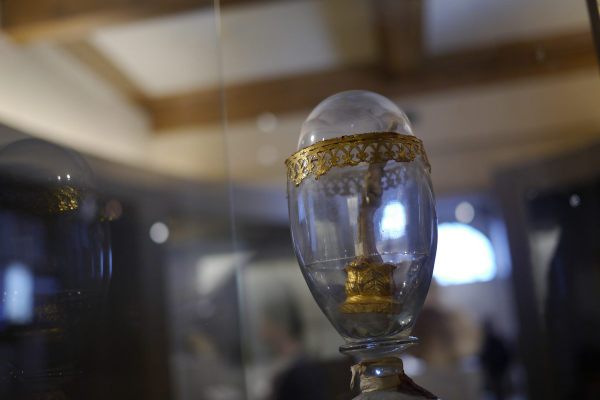The Skull and Bones of Mary Magdalene
Grotto of Mary Magdalene (all photographs by the author)
Outside Aix-en-Provence, in the Var region in the south of France, is a medieval town named Saint-Maximin-la-Sainte-Baume. Its basilica is dedicated to Mary Magdalene; under the crypt there is a glass dome said to contain the relic of her skull.
The skull of Mary Magdalene
Carving of the skull
It is paraded around the town each year, along with the many visiting relics of other churches around Europe, on the saint’s name day, July 22. The Feast Day Mass is held the Sunday after the actual feast day if it does not fall on a Sunday. Hundreds of people have been gathering for this event for hundreds of years. Before the feast day mass, costumed participants walk though the town, alerting the town of the mass, accompanied by flutes, drums, rifles, and horses from the Camargue. After the Mass, there is a processional of the Relics, including the Skull of Mary Magdalene.
Inside the basilica
But the area’s connection to Mary Magdalene extends up into the nearby Sainte-Baume mountains. When Mary Magdalene fled the Holy Land, legend says she took refuge in a cave there. This mountaintop cave is now a hidden monastery called the Sanctuary of Mary Magdalene, and it is located 25 kilometers outside of St. Maximin, at the top of a 90-minute hike through an ancient forest. On the edge of the forest is a modest restaurant and a hotel which is run by the Benedictine Sisters of the Sacred Heart of Montmarte. From the dirt parking area, you can see the forest, and above it, what almost looks like a Manitou cliff dwelling. It feels a million miles and a world away. When you begin your pilgrimage, there are two paths to choose, but all paths lead to the grotto.
Path in the forest
A beetle along the path
The cliff house
The Grotto
The Dominican monks have been the guardians of this sanctuary since 1295. The path up to the top is a pilgrimage, as you find yourself surrounded by ancient trees and bowed, worn away stones that have been walked upon for centuries. Near the top, you reach a steep incline, and a sign to remind you that this is a silent place, but visitors are welcome. After all, people have been making pilgrimages here since the 5th century. Kings, popes, saints, and ordinary people have all walked the “King’s Path” to visit the cave. King Louis XI visited in 1447 and in 1456, praying to Mary Magdalene for a son. In 1470, Charles VIII was born.
150 steps
At the entrance to the monastery you reach the cave by climbing 150 steps to an oak door flanked by twin pillars. As you pass through the door, the sound of water dripping into pools from the ceiling of the grotto is the only thing you hear. The only light comes from stained glass windows and prayer candles. The air is cold. The grotto is so huge that a full-scale chapel in honor of Mary Magdalene stands inside it.
The entrance to the grotto
Inside the oak door
A reliquary housing Mary Magdalene’s bones rests in a niche on a lower level beneath her statue. As you go down the stairs to an empty crypt, you stand in a pool of water beneath an alabaster statue of Mary Magdalene in Rapture, lit by candles. Even it has its own history, as during the French Revolution the statue was hidden in the nearby town of Plan d’Aups to protect it from looting during the French Revolution.
The relics of Mary Magdalene
Detail of the relics
The statue of Mary Magdalene
Stained glass in the monastery







Follow us on Twitter to get the latest on the world's hidden wonders.
Like us on Facebook to get the latest on the world's hidden wonders.
Follow us on Twitter Like us on Facebook